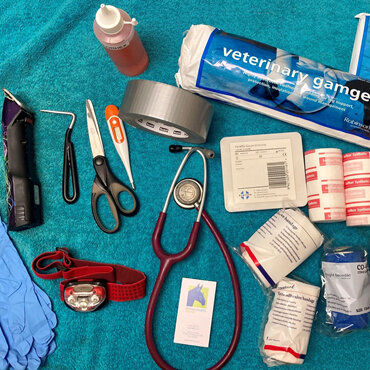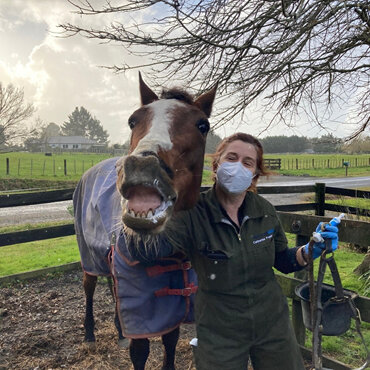Franklin Vets
Franklin Vets - excellence in veterinary care for dairy, farming, lifestyle, equine and household pets. BESTPRACTICE ACCREDITED NZ.

Planning ahead is important. Knowing your horse’s normal behaviour, appetite, activity and appearance will allow you to know when things are not right. Preventative health measures such as vaccinations, deworming and regular dentals are helpful. It is also good to write down the dates of the most recent treatments and keep that together with your vet clinic and insurance company’s phone number. Having a plan for the transport of your horse is beneficial as well. Finally, an emergency kit with the following is important: equine first aid book, emergency card, thermometer, disinfectant wash, scissors, gamgee or cotton, melonin or paraffin gauze, self-stick bandage, antiseptic ointment and a torch. Extras: zinc oxide/sunburn cream, Epsom salts, gloves, duct tape, clean stable wrap and wire cutters.
Not eating, depressed, standing alone lying down longer than normal, mild fever or abnormal gum colour.
A squinting or swollen eye, heavy nasal discharge that is green or yellow, heavy sweating or sudden onset of lameness.
Rolling, pawing, unable to get up or move, walking drunk profuse bleeding or difficulty breathing.
With any of the signs listed above, call the vet. We can discuss what is going on and get headed to you and your horse as soon as it's necessary.

Colic: Keep your horse walking to prevent them from lying down and rolling.
Wounds: With heavy bleeding, apply a pressure wrap with your cotton/gamgee and self-sticking wrap. If there is a lot of dirt in the wound, gently flushing with clean water is helpful.
Swelling: If there is a lot of swelling in a leg, cold therapy with ice or cold water is helpful.
Swollen eyes: Keep them out of the sun. Try to see if there is a white or blue appearance to the eye as that will let us know how quickly treatment is required.
Acute lameness: Have a look for swelling in the leg. Check the foot to see if there is something sticking into it. Keep the horse still so no further damage is done.
Choking: If there is grass or feed coming from the nose, remove any remaining feed and water from in front of your horse. Massage the groove in the left side of the neck to help move the food through.
Difficulty breathing: Keep your horse calm and remove them from the area with any dust or pollens.